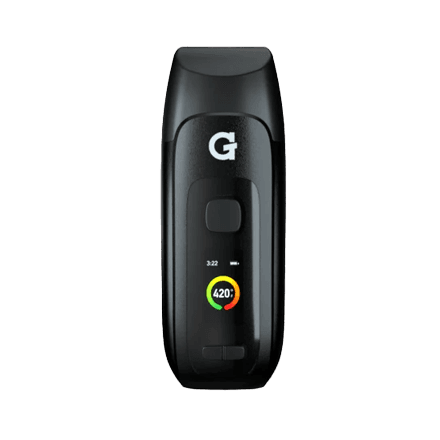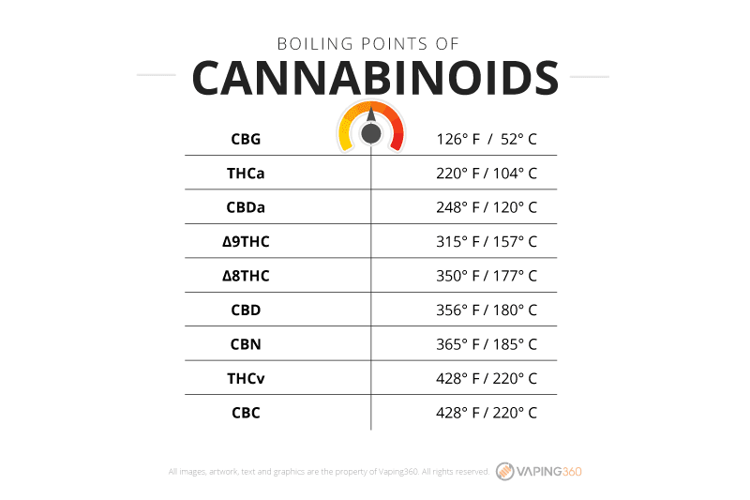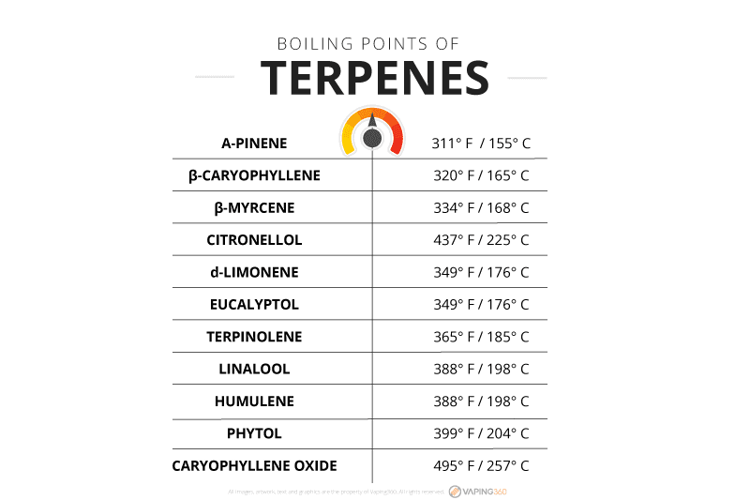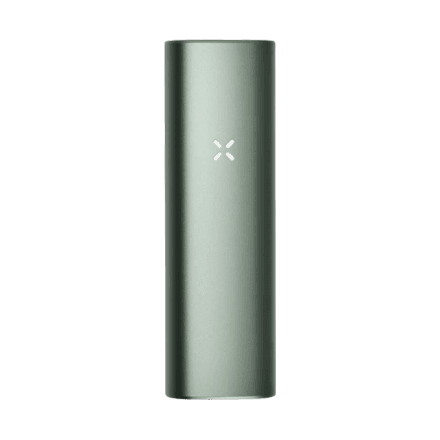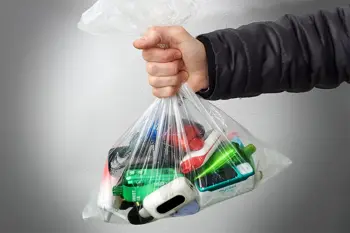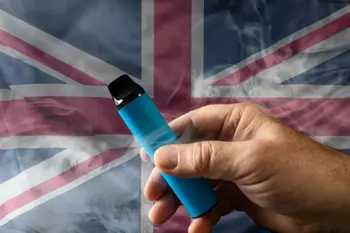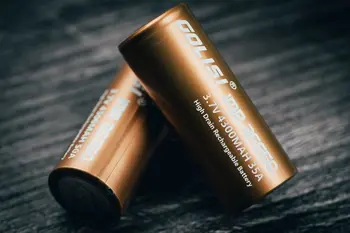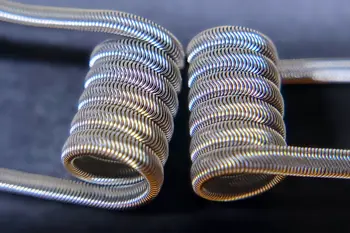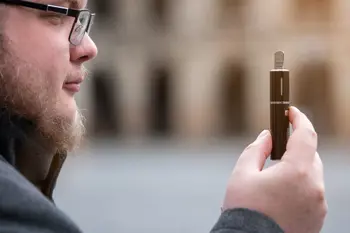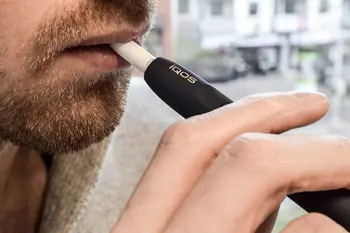What's the best temperature for vaping weed?
One of the major advantages of vaping weed or hemp flower is having control over the temperature. When you smoke, there is nothing stopping that bud from reaching temperatures as high as 1200° F (or around 650° C).
What’s the best temperature for weed, then? In this article, we will detail three main temperature ranges, highlighting their differences and advantages.
Keep in mind that everyone’s experience can vary based on a few key factors. For example, two weed vaporizers set to the same temperature can sometimes produce a different type of vapor. Additionally, each strain contains different levels of terpenes and cannabinoids, which contribute to their smell, taste, and effects. These organic compounds volatilize at various temperatures and will alter the experience.
Don’t worry; you won't need to graduate weed college for this. Just use this guide and play around with different settings.
Lightly toasted (325-350°F / 163-177°C)
THC, the main psychoactive ingredient in cannabis, has a boiling point of 315° F (157° C). You don’t want to go much lower than 325° F (163° C), especially if you want to really feel something. Low temps might appeal to you if you want the best flavor from your bud. It produces a fresh taste, with citrusy and/or piney undertones.
The vapor will also be much cooler, and less harsh on the throat, so you probably won’t cough as much. The possible side effects like paranoia, red eyes, and cotton mouth will be less severe. If you’re a wake and baker, low temp vaping can give you the feeling you want, without burning you out for the day. This is also the ideal setting for newcomers and lightweights who don’t want to get too intoxicated.
- Light euphoria, calming, invigorating
- Intense terpene flavor, fresh, citrusy, piney
- Cooler vapor, less coughing
- Decreased side effects (lethargy, anxiety, red eyes, dry mouth, etc.)
- Best suited for newcomers, lightweights, or flavor chasers
- Better suited for getting chores done
Terpenes: A-pinene, β-caryophyllene, β-myrcene, d-limonene, citronellol
Cannabinoids: Δ8THC, Δ9THC, CBD, CBG, CBC, THCA, CBDA
Half baked (350-400°F / 177-204°C)
This is a safe place to start while you’re still experimenting with marijuana or legal CBD cannabis. In this range, you still get plenty of terpenes, but now with more access to cannabinoids. The vapor is thicker and warmer. You’ll also taste more of the cannabinoids, which can give it a richer flavor. The warm vapor is satisfying for transitioning smokers.
The psychoactive effects will be noticeably stronger at these temperatures mostly because more THC is being volatilized. It can be relaxing and euphoric and put you in a meditative state without feeling drowsy. This temp range is an excellent middle ground for the best of both worlds between effects and flavor.
- Relaxing, euphoric, meditative, but not sleepy
- Flavorful and rich, terpenes plus cannabinoids
- Warmer vapor can be satisfying for smokers
- More THC gets volatilized
- Can experience minor side effects
- Increased cannabinoid availability
Terpenes: d-limonene, terpinolene, linalool, humulene
Cannabinoids: Δ8THC, Δ9THC, CBD, CBN, CBG, CBC, THCA, CBDA
Fully baked (400-430°F / 204-221°C)
For maximum cannabinoid extraction, this is the range to be in. The vapor will be hotter and less flavorful, but you will feel the strongest psychotropic effects. This range is best suited for nighttime sessions because of its ability to induce lethargy, also called the dreaded "couch lock."
At these temperatures, many terpenes will be depleted quickly. If you’re a real terp connoisseur, then you might want to reserve this range for the end of your sessions, for when you really want to blast off. This is the closest you can get to combustion without actually smoking, though it can still induce coughing.
- Intense effects, strong euphoria, lethargy, “couch-lock”
- Maximum THC volatilization
- Hotter vapor may cause coughing
- Fewer terpenes, higher cannabinoid extraction
- Activates THCV and humulene, appetite suppressants that can inhibit “the munchies”
- Closest experience to smoke/combustion
Terpenes: humulene, phytol, caryophyllene oxide
Cannabinoids: Δ8 THC, Δ9THC, CBD, CBN, CBG, CBC, THCA, CBDA, THCV
Vaping temperature chart
Here are the average boiling points for THC, CBD, and the most common terpenes and cannabinoids found in cannabis. Each organic compound has its own unique function, so you can check the profile of your strain and decide what the perfect temperature is for exactly what you’re trying to achieve with it.
Boiling points
The myriad cannabinoids and terpenes in cannabis have different boiling points. Here's what you need to know to be able to activate these compounds.
Bringing out particular cannabinoids can influence the intensity and duration of your high. Consider your desired experience before settling on a temperature. Likewise, if the breakdown is on hand, check what your weed is testing at. Certain strains will feature more or less minor cannabinoids.
Whenever you’re looking to temper the psychotropic hit of THC, vape at temperatures high enough to optimize CBD. This is likely most effective if you’re vaping a high-CBD marijuana strain, such as Harlequin, Cannatonic, or Sweet and Sour Widow. By the same token, activating compounds THCV and humulene—see our next graph if you’re interested in the latter—can suppress appetite and mitigate the inevitable munchies.
Just because you’re looking to get high doesn’t mean you need to hone in on delta 9 THC alone.
Much like cannabinoids, terpenes can fine-tune the effects of vaping cannabis. While humulene suppresses appetite, β-caryophyllene stimulates CB2 receptors and boosts hunger. Your bad case of the munchies won’t be tamed by β-myrcene, either.
Terpenes do more than manage appetite. A host of them, including d-limonene and α-pinene, may possess anti-inflammatory or analgesic qualities.
Choosing a strain with the correct profile is only the beginning. By vaping in a given temperature range, it’s possible to activate terpenes with the highest degree of precision.
Finding the right temp for vaping weed
Still not sure what temperature to set your vaporizer at? It can be difficult to find the setting that works best for you. The best way to experiment is to start in the 350-400° F (177-204° C) range and then work your way up or down by 5-10° (or 1° C) at a time. Play around a bit, and eventually, you will find the temp that is just right for you.
- If your herb is too moist, most of the heat will be wasted on drying out your buds. Vaporizers tend to work much better and produce more vapor with dryer herb. You can always let your weed air out for a few hours or even overnight; grinding it first will speed up that process.
- Modern vaporizers are now capable of vaporizing concentrates these days. The best temps for dabs and CBD concentrates will typically be higher than for dry herb. The same general principle applies: less heat = better taste. However, if it’s too hot, you’ll be losing valuable terpenes and flavor.
- Lower temps are better suited for morning and daytime use, higher temps are more appropriate for evening and late-night sessions.
- Generally speaking, lower temps are more conducive to flavor, whereas higher temps will give you the strongest psychoactive effects. The boiling point of THC is around 315° F (157° C), so anything lower will produce minimal psychoactive effects.
- CBD tends to boil at a slightly higher temperature than THC, so keep that in mind if you are using cannabis for medicinal purposes with hemp or cannabidiol-rich strains.
- You’ll typically want to vape 10° F (or 1° C) hotter than the average boiling point of the desired terpenes and/or cannabinoids, but be aware that it can slightly vary with different devices or strains.
- If you’re vaping in the lower temperature range, don’t throw out your already vaped bud (AVB). If it’s greenish, or even light brown, it probably still contains valuable cannabinoids. It’s also now decarboxylated, which simply means that it’s now primed and ready for making edibles or tea.
